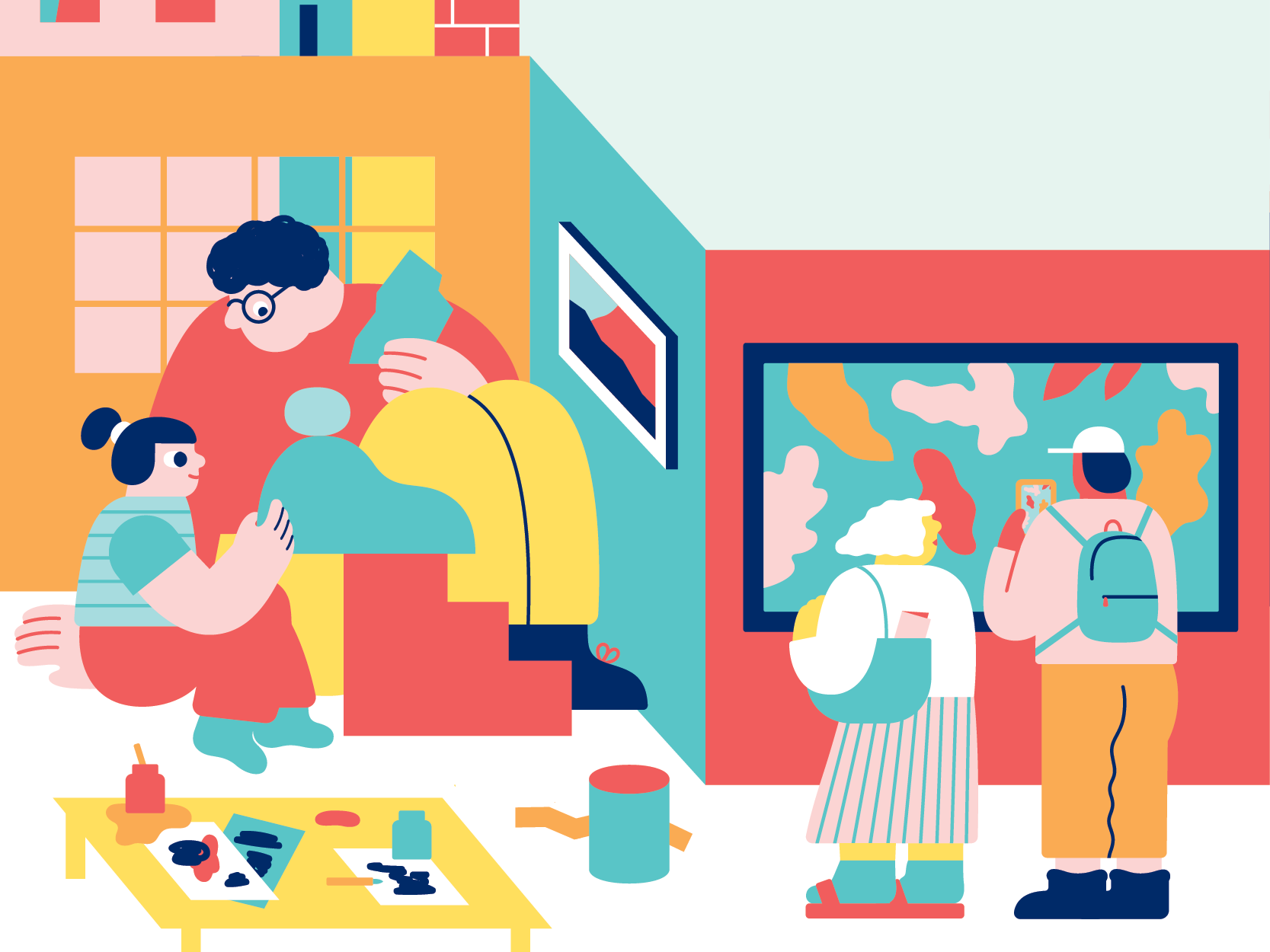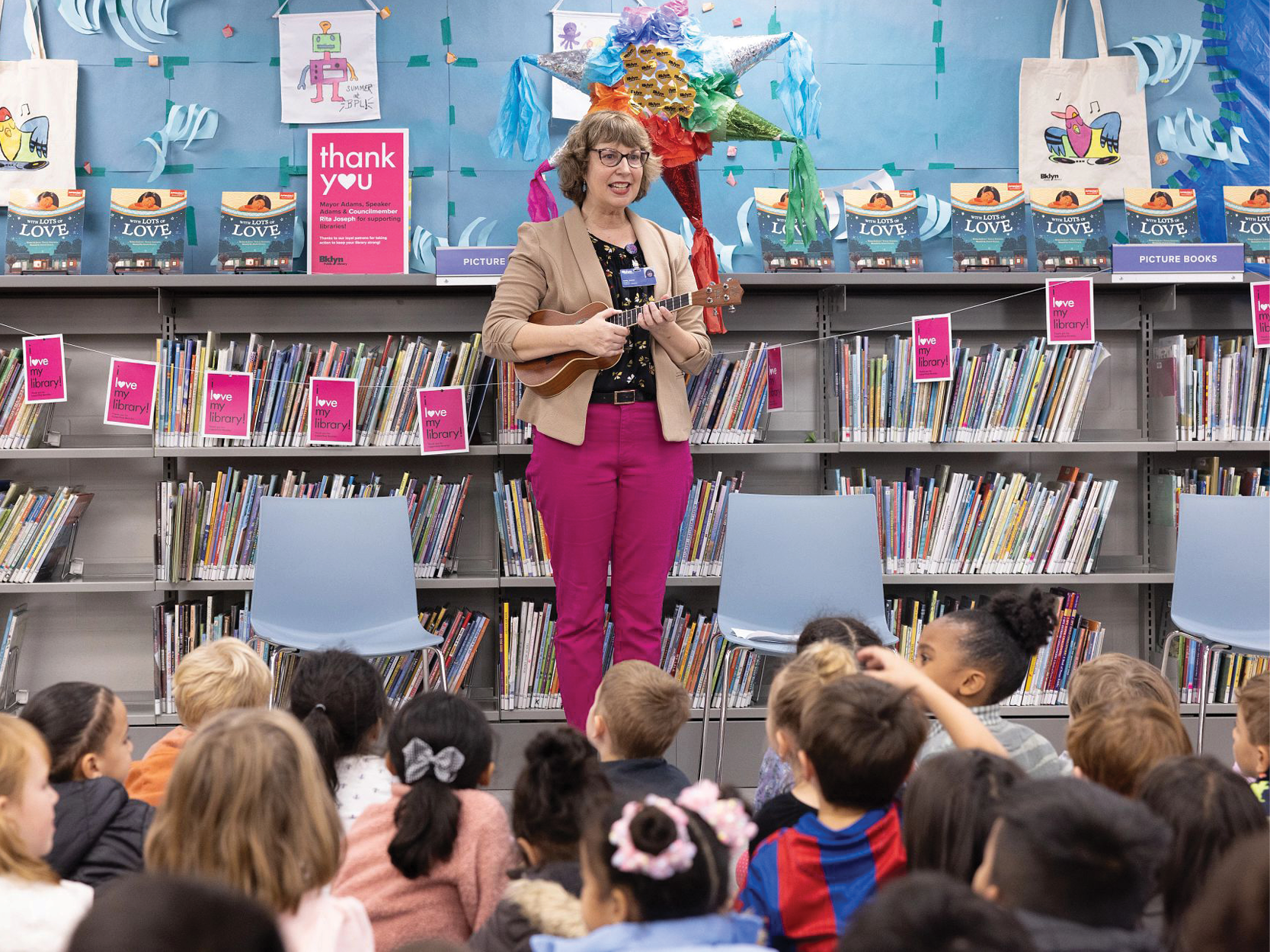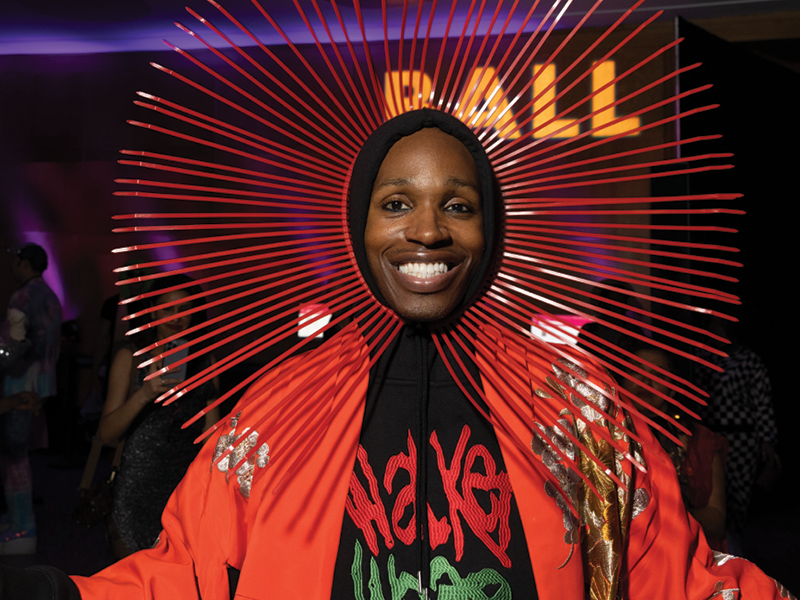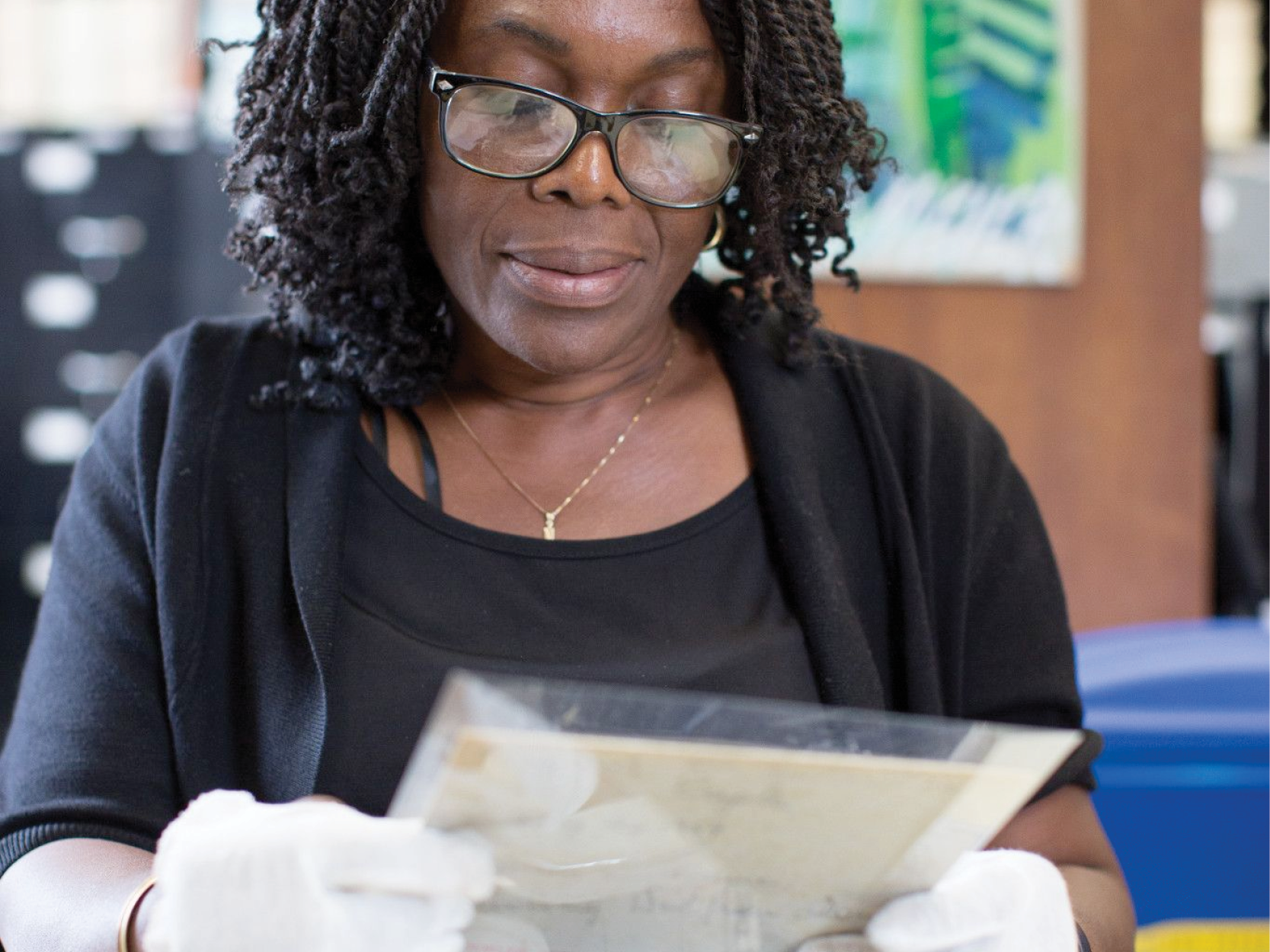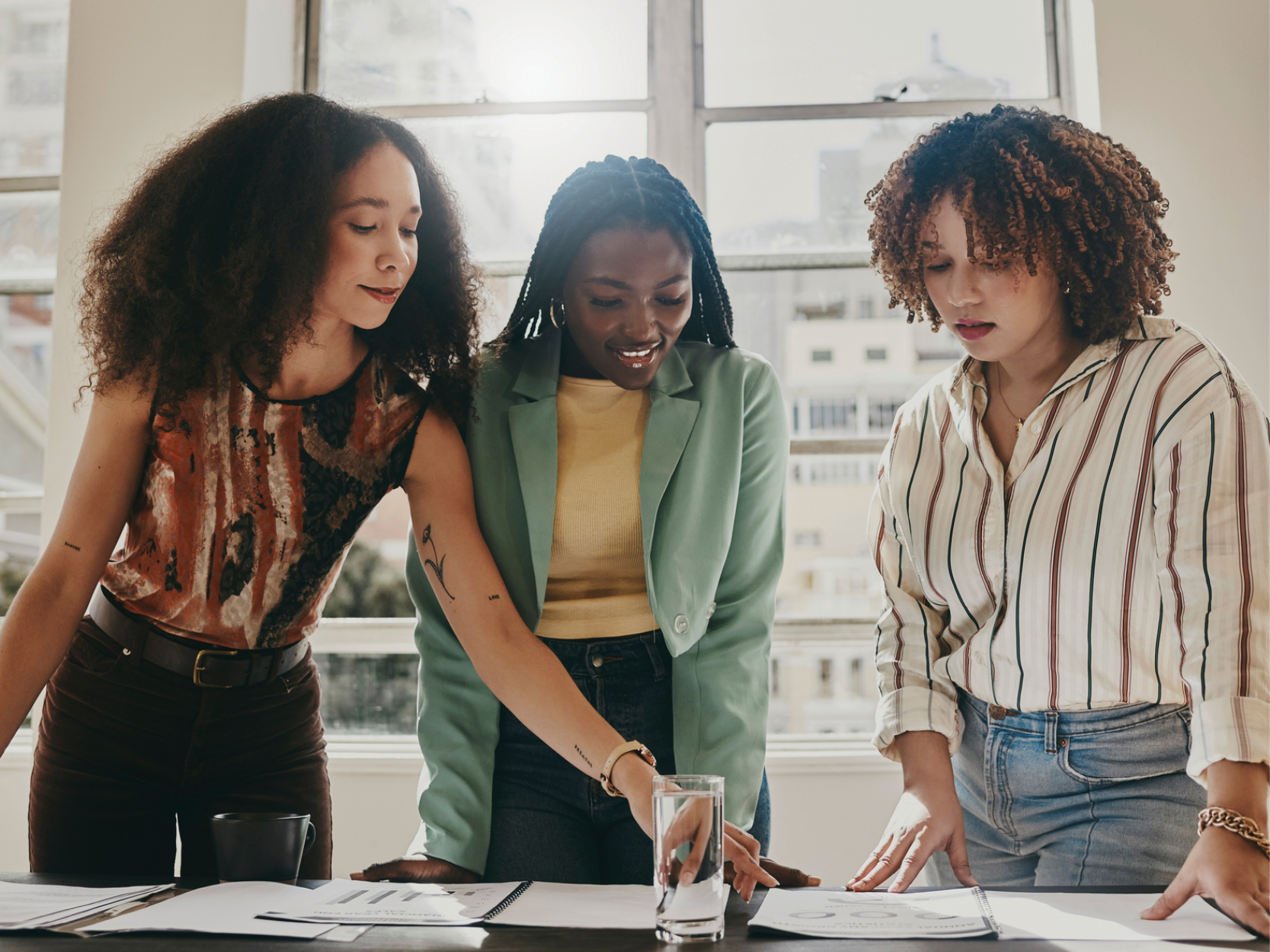
Education departments play a pivotal role in museum settings. Through teacher workshops, student and adult programs, guided tours, and more, museum educators are tasked with creating accessible educational opportunities, facilitating open conversations, reducing barriers to participation, and ultimately ensuring that the museum experience is meaningful for all patrons.
One of the record groups that I was most excited to tackle as part of the Brooklyn Historical Society Institutional Archives Project was the Education Department files. Spanning from the department's inception to the merger between the Brooklyn Historical Society (BHS) and the Brooklyn Collection at the Brooklyn Public Library, this material consists of approximately 20 linear feet of curriculum guides, photographs, programming files, marketing materials, and administrative records. While I’m still in the early stages of processing these records, I’m eager to share some of what I've learned about the major initiatives and programs undertaken by the education staff at BHS over the years.

The Education Department at the Brooklyn Historical Society was formally established in 1984. Prior to this initiative, the Society had limited school or public programming, with the Children’s History Room being the only educational program until its conclusion in 1977. Under the leadership of Joyce Crawford (Curator of Education, 1984-1987), the education staff created a full schedule of events – including walking tours, lectures, and panel discussions – and designed school programs that served thousands of Brooklyn students.

The programs and classes designed by the Education Department sought to teach the history of Brooklyn’s diverse people, past and present. Educators such as Jane Emmet (Curator of Education, 1987- ca.1991) also aimed to change the perception of historical societies for their visitors, especially younger ones: “The idea of visiting a historical society doesn’t exactly excite a lot of kids when they first hear it…What we try to do is redefine their image of a historical society, to turn it from something dry and foreboding into something they can participate in and enjoy” ("Staff Profile: Jane Emmet." BHS Newsletter, July/August 1987).
With these foundational principles in mind, the Society crafted a range of programs, curricula, and initiatives for its patrons, which we’ll now explore.
Brooklyn Life Project

In 1989, the Brooklyn Historical Society marked a milestone with the opening of Brooklyn’s History Museum — the first long-term exhibition on the borough’s history. The exhibit featured five themes: recreation in Brooklyn, Brooklyn industry, transportation and urban development, baseball history (specifically the Dodgers), and Brooklyn’s diversity. Going beyond the utilization of its collections, the Society actively sought the personal stories of Brooklynites, aiming to forge connections between people's experiences and the objects on display.
Under the direction of Madeline Slovenz (Coordinator of the Brooklyn Life Project), and later Diane Esses, the Education Department launched the Brooklyn Life Project — an initiative to collect stories from Brooklyn natives about their lives in the borough. The call for Brooklyn Life Associates was open to all, but special emphasis was placed on the narratives of older patrons.

Two years prior, Jane Emmet, responding to increased requests from senior centers for slide programs on Brooklyn’s history, revamped the slideshow to resonate more closely with this audience and to emphasize the importance of reminiscences and storytelling. As a result, the themes and objects of Brooklyn’s History Museum were enriched by the collected anecdotes, and the Society was able to meet its goals of “encouraging people to realize the connection between their personal experience and their community’s history” and “engaging them in the discovery of Brooklyn’s past and present” ("Sharing with Seniors.” BHS Newsletter, April-June 1989).
Public Programs

From its establishment, the Education Department was responsible for all of the public programming hosted by the Society, catering to patrons of all ages. This included walking tours, lectures, panel discussions, workshops, and multicultural programs designed to create awareness and affirmation of Brooklyn’s diversity. These programs took the form of cultural performances, children’s activities, crafts, slide presentations, parties, and more. One notable initiative, 'Passport to Brooklyn,' featured a series of musical events representing various cultures, coupled with question and answer sessions. According to Fabiana Chiu (Curator of Education, 1991-1993), the overarching goal of these programs was to “offer a unique opportunity to take an in-depth look at Brooklyn’s communities from an insider’s point of view…These initiatives aimed not only to provide an open forum for discussion but also to serve as a platform for communities to inform and increase awareness, asserting their rightful place and full participation in Brooklyn’s past, present, and future" (“Education: The Window of Endless Opportunity.” BHS Newsletter, January-April 1992).
While the topics covered in these programs varied, they were typically linked to the ongoing exhibitions. For instance, in 1994, a series of programs was designed in conjunction with AIDS/Brooklyn – an exhibition that explored the effects of the AIDS epidemic on Brooklynites, including people with AIDS, their family members, AIDS activists, health care providers, volunteers, and community group workers. Some of the programs planned in relation to this exhibit included a panel discussion of people who had been affected by the epidemic and a workshop about volunteering during the AIDS crisis.
The Education Department continued to manage the majority of the public programs until 2013, when Marcia Ely was hired as Vice President of Programs and External Affairs. This involved the creation of a separate public programming department, as well as overseeing all public-facing elements of the Society. Consequently, the Education Department shifted its primary focus to school programming.
School Programs

Aside from public programming, one of the main functions of the Education Department at BHS was the development of school programs. The Society’s classes were designed to inspire curiosity, meet the needs of students from various backgrounds, and teach the history of Brooklyn’s diversity. In planning these lessons, the educators at BHS operated with the knowledge that children can often be overwhelmed by the size of museums, and that previous programs often alienated them by presenting a long list of names and dates that had little meaning. As a result, BHS developed programs to connect the artifacts in glass cases to meaningful items and ideas in students’ lives.

One of the most popular programs was “Many Faces, Many Ways.” Beginning in 1990, “Many Faces, Many Ways” encouraged students to explore their cultural traditions and learn about those of others through the exploration of artifacts, slides, and open discussions. This program ran for several years and resulted in a curriculum that was distributed to teachers throughout New York City. The Society would go on to develop several school programs that covered a range of topics, including a class for students in grades 6 and up, titled “AIDS’ Human Faces,” which featured a tour of the Society’s AIDS/Brooklyn exhibition and a discussion of issues surrounding the disease.

Numerous school programs at the Society took place within the Margaret L. Brown Education Center, named after Dr. Margaret Louise Brown—a Flatbush native and long-time member who bequeathed $250,000 to the Society upon her passing. Thousands of children experienced the Society’s educational offerings in this room. However, due to an extensive building renovation, the space temporarily fell out of use. Post-renovation, the classroom moved to the newly renovated basement referred to as the History Discovery Center.
Youth Program Initiative

In 1994, the Society embarked on a three-year program to greatly expand its education programs. Due to increased demand following the opening of Brooklyn’s History Museum, the Society recognized the need to strengthen the services it provided for Brooklyn Youth, leading to the implementation of the Youth Program Initiative. The goal of this program was to increase the number of students the Society served, as well as broaden the Society’s ability to support English as a Second Language (ESL) and literacy programs, community and social service organizations, and after-school groups. To achieve its goals, the Society hired additional staff, enhanced existing school programs, developed after-school and summer activities, and produced new printed materials for promotional and instructional purposes. The program also included the Society’s first formal internship program for college and high school students, which provided professional training for students considering careers in education or museum work. The interns helped research, plan programs, teach, and develop curriculum. By 1997, the Society was able to accommodate over 10,000 students annually, which is three times as many as it was able to when the department was first established.
Curriculum and Kit Development

While developing its school programs, the Education Department also sought to provide local history teachers with resources that could supplement their textbooks and lecture slides. One way this was accomplished was through publishing teacher’s guides, kits, and curriculums. The first few guides offered were largely related to the exhibition on display, but the Society soon began branching out. In 1992, the Society published “Yellow Magic: The Story of Penicillin,” which did not have a corresponding exhibit. Coordinated by Laura Miller (Director of School Programs, ca. 1990-1993 and Curator of Education, 1993-1995), and written by Abby Remer in collaboration with the New York Hall of Science, the guide features a multidisciplinary method for teaching about the history of penicillin.

In subsequent years, the Education Department produced curricula and kits on topics such as the Civil War, the histories of various Brooklyn neighborhoods, the history of sports, and abolitionism in Brooklyn. The kits, which included lesson plans, student task sheets, and reproductions of primary source materials, held particular significance as BHS's primary method of educational outreach during the building's closure for renovations. Schools had the option to buy these kits for teachers to incorporate into their classes, contributing to the Society's income.
Gateway to the City

In addition to curricula, the Brooklyn Historical Society also offered professional development workshops and other educational resources as part of its commitment to supporting New York City teachers. In 2001, the Brooklyn Historical Society, in partnership with Hofstra University and the New York City Department of Education, received a Teaching American History Grant for the Gateway to the City project. This three-year grant provided funds for staff development, books and technology for the classroom, and the public presentation of teachers’ work.
The primary goal of Gateway to the City was to expose teachers and students to the wealth of resources available in New York City. This was achieved through curated trips to cultural institutions and historic sites, providing access to primary source materials, and developing programs that linked New York City's history to national themes. Throughout the project, Hofstra University professors offered pedagogical support, and Lynda Kennedy, BHS’s Head of Teacher Outreach for the Gateway project, worked with each teacher to provide materials, facilitate staff development, and coordinate field trips. Gateway to the City also included an annual Summer Institute, during which teachers developed curriculum units, participated in workshops on the use of technology and primary source materials, and attended presentations by scholars of New York City history.

Following this program, the Brooklyn Historical Society continued its support for teachers by offering workshops and providing free digital resources, many of which remain available on our educator resources page.
Town Criers: Young Curators Reveal Historical News
Beginning in 2004, the Brooklyn Historical Society launched the “Town Criers: Young Curators Reveal Historical News” program—a three-year program involving collaboration with classes from various Brooklyn public schools to create traveling exhibitions and original plays that explored how national events shaped life in Brooklyn. For instance, in the program's third year, BHS collaborated with a class at Cobble Hill High School of American Studies. Throughout the school year, students engaged in intensive primary source research on the period from 1800 to 1880, focusing on topics such as the Civil War, the Draft Riots, and Brooklyn’s role in the emerging global economy. Utilizing their research, the students then crafted a detailed script, which they later performed for the public. Additionally, they curated a four-paneled, free-standing exhibition displayed at venues including BHS, Weeksville Heritage Center, and various Brooklyn high schools. The ultimate goals of this project were to cultivate a deeper understanding among both students and the public of how nationally significant events affected Brooklyn neighborhoods and to showcase the multiple perspectives associated with these historical moments.
Young Curators/Young Scholars

Following the success of Town Criers, the Brooklyn Historical Society launched Young Curators—an after-school program in which students researched and curated exhibits about their school’s neighborhood. Over a dozen elementary and middle schools participated, with each school producing three professionally designed exhibit panels that were displayed within their premises. The goal of this program was to introduce students to historical research and bring history to life for the entire school population, their families, and City Council members. Guided by BHS staff, these students researched a topic in their neighborhood’s history, analyzed primary and secondary sources, and communicated their findings through the exhibit panels. In 2015, a similar program, Young Scholars, was introduced at P. S. 312 in Bergen Beach. Rather than create exhibit panels, this group of students conducted research and authored a book about the history of Bergen Beach’s Waterways. Other books that were published through the Young Scholars program cover topics such as the Brooklyn Bridge, Caribbean Immigration, Firefighters, Sewers, and the Sugar Industry. You can view digitized copies of these books here.
Both Young Curators and Young Scholars were funded through Cultural After School Adventure (CASA) grants from local City Council Members, which enabled BHS to offer these programs at no cost to the participating school or students. The Education Department considered these two programs integral to its mission to connect the past and present and make the history of Brooklyn tangible, relevant, and meaningful for contemporary communities.
Ex-Lab/Teen Council

Around the same time as Young Curators was underway, the Education Department, led by Kate Fermoile and Andrea Del Valle, developed Exhibition Laboratory (ExLab) to expand the institution’s education offerings to high school students. As part of this program, BHS staff turned over an exhibit space to a group of 9th – 12th-grade students so that they could curate exhibits based on topics they found interesting. In collaboration with educators, scholars, museum professionals, and graphic designers, the teen curators researched and prepared all aspects of an exhibit, including choosing objects, crafting a narrative, writing object labels, working with the design team, and installing the exhibit. The first exhibition, The Secret Lives of Streets (2007) explored Brooklyn’s streets and the people they’re named after. Later exhibits would cover topics such as the Brooklyn Bridge, Jasper Danckaerts’s 17th-century Dutch journal, and the Brooklyn Dodgers. ExLab ended in 2015 when it became difficult to sustain. However, it was soon replaced with Teen Council, an after-school internship program designed for New York City teens.

Similar to ExLab, Teen Council brought in a cohort of 15-30 teens throughout Brooklyn to create and curate exhibition panels that were shown on the 2nd floor of BHS. One of the last projects conducted by Teen Council was a 2019 exhibition titled A Queer Look at Brooklyn, which explored how themes of community, gentrification, and advocacy have historically affected LGBTQ life in Brooklyn.
Teen Innovators at BLDG 92

In the fall of 2012, the Brooklyn Historical Society launched Teen Innovators, an afterschool internship and career exploration program for teens focused on creating and expanding work-readiness skills and critical thinking. It was a partnership between BHS, the Brooklyn Navy Yard Center at BLDG 92, and several New York City Schools. During this program, students researched the Yard's history, participated in discussions with business leaders based in the Yard, and completed paid internships through the Brooklyn Navy Yard Employment Center.
The overarching goal of Teen Innovators was to provide students with an enhanced understanding of the Navy Yard as a significant component of their community's urban landscape, along with insight into the career opportunities it housed. This approach proved successful, earning the program recognition in 2017 as one of the twelve winners of the National Arts & Humanities Youth Program Awards— the nation’s highest honor for after-school arts and humanities programs.
Education Today

In 2020, the Brooklyn Historical Society merged with the Brooklyn Collection at the Brooklyn Public Library to form the Center for Brooklyn History (CBH). While the Education Department may look different, many of its current offerings continue the work begun at BHS in 1984. At CBH, our educators strive to connect students and educators to our unique collections, programs, and events that bring the history of Brooklyn to life. They do this through offering professional development workshops, free digital curricula and lesson plans, teen internship programs, and Brooklyn Connections, our signature standards-based local history education program for 4th-12th grade students. As of 2021, CBH is also the home of New York City History Day, a program where students in grades 6-12 create projects based on original historical research and analysis (if you’d like to be a judge, learn more here!).

Through the Education Department's programs, both past and present, patrons of all ages have not only delved into Brooklyn's rich history but also actively cultivated critical thinking and problem-solving skills that will extend far beyond the walls of our landmark building. By fostering connections between the past and present, as was the goal from the beginning, our educators have continued to transform history from a potentially meaningless collection of names and dates into a relevant narrative intertwined with the lives of all who visit us.
The Brooklyn Historical Society Institutional Archive Project is generously funded by the Leon Levy Foundation.
Special thanks to Emily Potter-Ndiaye, Andrea Del Valle, Fabiana Chiu, Kate Fermoile, Shirley Brown Alleyne, and Marcia Ely for talking to me about their experiences working at BHS!
This blog post reflects the opinions of the author and does not necessarily represent the views of Brooklyn Public Library.
Post a Comment
While BPL encourages an open forum, posts and comments are moderated by library staff. BPL reserves the right, within its sole discretion, not to post and to remove submissions or comments that are unlawful or violate this policy. While comments will not be edited by BPL personnel, a comment may be deleted if it violates our comment policy.
eNews Signup
Get the latest updates from BPL and be the first to know about new programs, author talks, exciting events and opportunities to support your local library.

